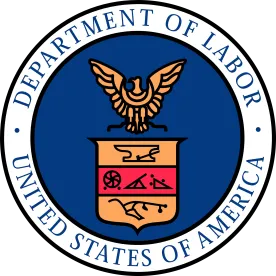On Thursday, January 14, the Department of Labor (DOL) published a regulation which will significantly increase prevailing wage requirements effective July 2021.
Key points regarding the rule:
-
The rule will take effect 60 days after publication in the Federal Register, on March 15, 2021.
-
There are no immediate changes to the DOL wage levels, as the increased wage levels will be phased in between July 1, 2021 and July 1, 2024.
-
The ultimate implementation of the rule will likely be delayed by the Biden administration, as the incoming administration has promised to pause any “Midnight Regulations” implemented by the outgoing Trump administration.
Background
DOL last updated its prevailing wage structure in 2004, and created a four-tiered wage system. The current system classifies the four tiers with corresponding skill levels, and the percentile of wage data used to set each wage level, as follows:
|
Wage Level |
Skill Level |
Percentile of data for wage level |
|
Level I |
Entry Level |
17th |
|
Level II |
Qualified |
24th |
|
Level III |
Experienced |
50th |
|
Level IV |
Fully Competent |
67th |
While the DOL has never published its underlying data or methodology for creating the wage level amounts, in most circumstances the existing DOL wage data created a reasonable wage system that employers could rely on in determining the appropriate prevailing wage for an H-1B, H-1B1, or E-3 worker, or PERM applicant. In most cases the DOL wage data generally aligned with market wages.
Recent History of the DOL’s Prevailing Wage Regulations
In October 2020, DOL issued an Interim Final Rule which took effect almost immediately after publication. The revised prevailing wages resulted in dramatic increases to the DOL’s prevailing wage data, which is used to establish minimum pay levels for H-1B, H-1B1 and E-3 visas, as well as PERM Labor Certifications.
On December 1, 2020 the U.S. District Court for the Northern District of California set aside this regulation. In Chamber of Commerce v. DHS, the District Court held that DOL did not have a valid justification to rush the publication and implementation of this regulation without following the required notice and comment periods as required by the Administrative Procedures Act (APA).
New Regulation
The new regulation uses a similar, tortured rationale to justify the use of a much higher percentile to set each of the four wage levels. The Rule also references the President’s Executive Order 13788, known as “Buy American and Hire American.” That Executive Order stated an “urgent need for strengthening wage protections in these programs to support economic recovery.” In short, this new rule will again result in prevailing wages that are expected to be far higher than industry standards, with the effect of discouraging U.S. employers from hiring foreign workers. While the wage increases will be phased in over time, and will have slightly smaller increases than the October final rule, the impact to employers will still be significant.
The new rule both phases in the increased wages over time, and creates a dual wage system, with slightly lower wage levels for H-1B petitions for workers with an approved I-140 petition, or for whom H-1B status has been extended beyond six years.
After the final phase-in, the breakdown of the four-tiered wage system for H-1B1 and E-3 visas, PERM Labor Certifications, and most H-1B visas, will be as follows:
|
Wage Level |
Skill Level |
Percentile of data for wage level |
|
Level I |
Entry Level |
35th |
|
Level II |
Qualified |
53rd |
|
Level III |
Experienced |
72nd |
|
Level IV |
Fully Competent |
90th |
The Level I and Level II wages promise to be alarmingly high, as the percentile for each of those levels will be doubled. These wages will likely far exceed competitive wages currently paid by U.S. employers.
Modified Wages for H-1B Workers with 7th Year Extensions
The wages for H-1B petitions for workers with an approved I-140 petition that allows for an H-1B extension beyond six years; or for whom H-1B status has been extended beyond six years, will be set at a “transition” wage level that will be slightly lower than the increased wage levels described above. The DOL has a complex formula for calculating those wages, which are intended to phase in the new wage system for affected workers over a three-year period. In essence, the wages for this population will be set between 85% and 95% of the above prevailing wages, or slightly higher depending on a formula to be determined by DOL. Effective July 1, 2024, prevailing wages for this H-1B population will be the same as for all other visa classifications and PERM cases.
Alternative Prevailing Wage Data Continues to Be Accepted
The one area of the prevailing wage regulations that remains unchanged is the ability to use certain private wage surveys that meet DOL criteria for wage methodology. The DOL’s wage methodology is described in their regulations, and is also unchanged. Employers who find the new OES wage data unusable may still seek to rely on a private wage survey to justify paying a lower wage than that mandated by the OES wage data.
Mintz will continue to monitor developments and will publish further alerts when there are updates. If you have any questions regarding this new regulation, please contact your Mintz immigration attorney.




 />i
/>i

